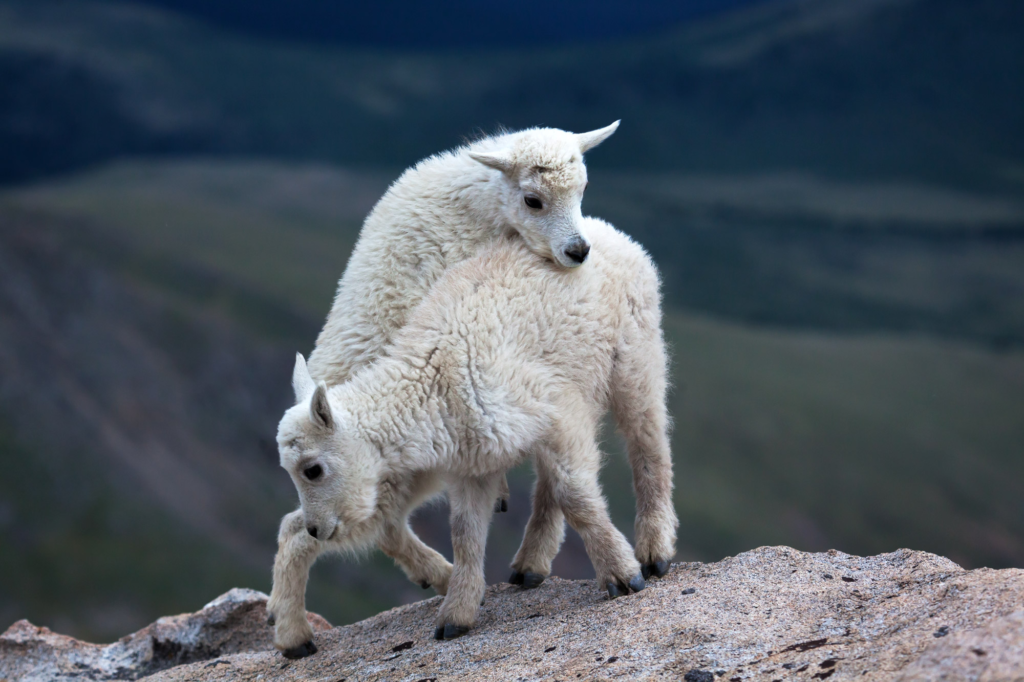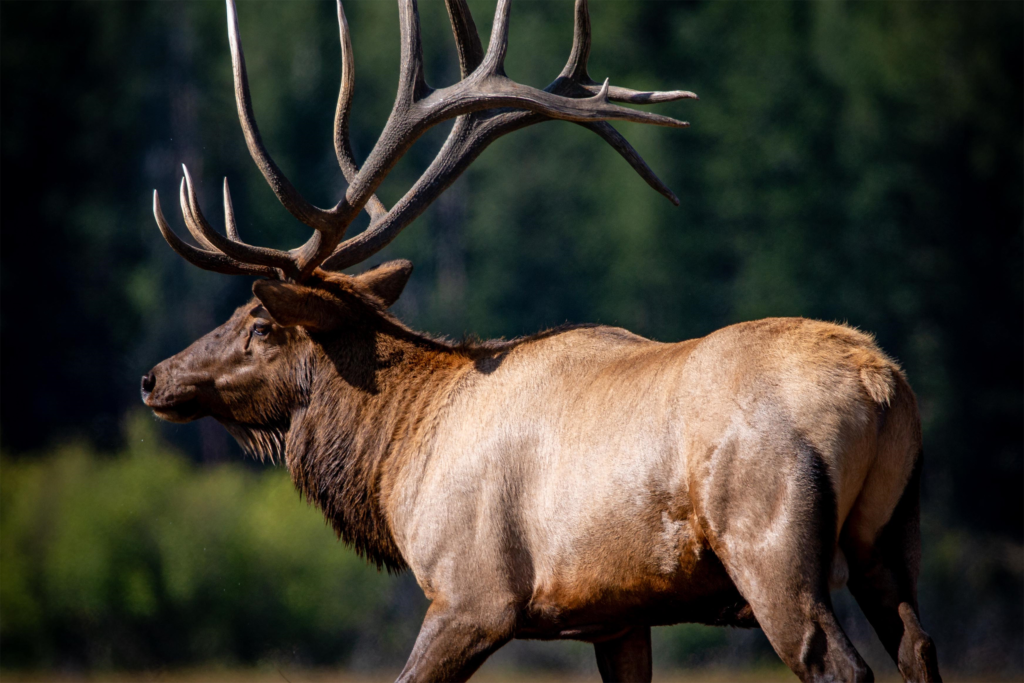Rocky Mountain Goat (Oreamnos americanus)
The mountain goat is an endemic mammal of the high mountains of the American west. A sure footed cloven hoofed mammal that is at home on steep rocky terrain that is near impossible for predators and humans to negotiate Not a regular visitor to lower altitudes, but do venture to lower venues in the search for food and to avoid severe weather that is common in the higher terrain of the west.

Although not a true goat, they are more closely related to the European chamois and Himalayan gorals. They can be found in the higher terrain from Alaska to the Rocky Mountains of Colorado up to 13,000 feet.. Native to the states of Washington, Idaho and Montana, they have been successfully transplanted across Wyoming, Utah, Oregon, Colorado, South Dakota and the Olympic Mountains of Washington state. They probably migrated into the New World from Asia by way of the Bering Strait during a retreat of the Cordilleran Ice Sheet.
A small prehistoric mountain goat (Oreamnos harringtoni) lived in the southern Rocky Mountains during the late Pleistocene era. DNA studies suggest this animal was a sister species rather than being the ancestor of today’s mountain goat. Today’s Rocky Mountain goat is the only living species of the genus Oreamnos.

Both male and female goats have horns (5.9-11 inches) in length. With their near white coats, they can withstand winter temperatures as low as -51 degrees F. and winds that can reach 100 miles per hour.
The diet of these hardy mammals consists of grasses, herbs, sedges, ferns, mosses, lichens plus leaves and twigs. Life spans in the wild run from 12 to 15 years, but have been recorded to live for 16 to 20 years in captivity.
Kids are born in late May and early June and weigh about six and half pounds at birth and can follow the ewe within hours of birth.

Aggressive by nature, a Mountain goat gored to death a Grizzly Bear in British Columbia in September of 2021.
Editor’s note: I have hunted this species, and most of the others featured in this series, and frankly, they are the only ones I would not hunt again. The terrain where the Mountain goat is found is unforgiving at best and downright hostile at worst. I had never shied from a physical challenge before, but after a week chasing this elusive critter in the Wrangel-St. Elias NWR, I was ready to quit. I finally bagged a smallish billy on the next to last day of the hunt.
Elk (Cervus canadensis)
Elk are among the largest species of the deer family and one of the largest terrestrial mammals in its native North American range. In North America, there are four species of elk, the wide spread Rocky Mountain elk, the coastal Roosevelt elk, the Tule elk of northern California and the Manitoban elk found in North Dakota and the southern prairie provinces of Canada. These magnificent animals are called Wapiti in the Cree and Shawnee language meaning “white rump”.

Currently native to much of the western United States and Canada, the species likely migrated from Asia during the late Pleistocene era. Highly prized as a game species, the meat of this animal is leaner and higher in protein than beef or chicken.
Male elk can be very aggressive during the rut and cows are protective of young calves so it behooves humans to give elk a wide berth. Every year there are news stories of people being gored by males and trampled by cow elk. I for one have no concern for people who are stupid enough to molest these LARGE animals.



The Rocky Mountain Elk Foundation is largely responsible for the large elk herds and the viability of the hunting populations available in the western US.
For anyone seeking further information on elk, I would suggest you contact the Rocky Mountain Elk Foundation, phone (800) 225 – 5355, mailing address 5705 Grant Creek Rd. Missoula, Montana 59808.
Author’s note: This concludes this cursory look at some of the iconic fauna, flora and geologic areas of this, “Our American West.” Walt 2023
You can find the previous parts of this series here, here, here and here.
